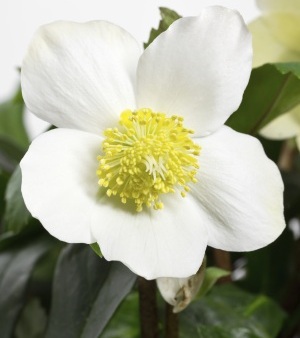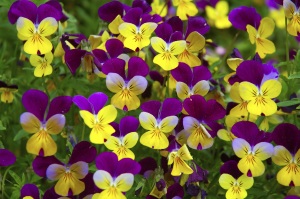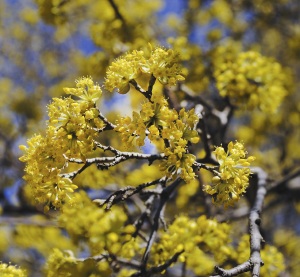- Prepare your garden for winter so you can enjoy the space throughout the colder months
- Find out what you can plant now for seasonal blooms
- Top tips for maintaining your garden throughout winter so it's a safe place to be
- How you can encourage wildlife into your garden
After spending all of the summer months out in the garden, our outside spaces can end up looking a little abandoned and neglected once the cold winter months descend. Unless you are a die-hard gardener (and let’s be honest, not many of us are), it can be hard to keep our gardens up to scratch and looking good all year round. We can argue that this doesn’t matter too much as we aren’t spending any time out there in the colder months, but we can’t deny the fact that we still have to view the outside through the window. With more and more of us enhancing our living spaces with bi-fold doors, it goes without saying that if your home looks shabby on the outside, it will inevitably have a negative effect on how it appears on the inside.
It doesn’t have to be a huge task to make the most of your outside space in the winter, and the following tips can help maintain a bit of interest even if the sun isn’t shining.
Foliage
It’s easy to assume that gardens simply lose all their colour in winter and are just a mass of green. This simply isn’t the case though as different shades of green can create a real impact, and many plants still flower in winter. Shrubs are particularly good for giving your garden a quick fix as if you buy them when they’re young, you can simply leave them in a pretty pot on your patio to add a splash of colour. Below are the top five options for winter bloomers you can introduce to your garden:
- Hamamelis × intermedia – Flowering in January and February, this shrub produces bright red flowers which have a lovely spicy smell. Try Hamamelis × intermedia from Crocus for £29.99.
- Helleborus niger – Also known as the Christmas Rose, Helleborus niger has a beautiful white flower which contrasts beautifully with its green foliage. This plant is available as a pot plant perfect for your patio from Gardens4You for just £5.95 and blossoms between December and March.

- Violas – These cute little flowers look very similar to pansies and are ideal for livening up your boarders in winter. There’s a huge range of colours available including purple, yellow, red and orange flowers. They’re very affordable and can be bought online from Plant Me Now for as little as 12 plants for £9.

- Bellis – This pretty daisy flowers from February until May and is available with bright pink or white blooms. You can buy Bellis online from Thompson Morgan and plant in rockeries or use on your patio.
- Cornus mas 'Golden Glory' – This plant flowers from February to March and produces pretty golden yellow flowers. A bonus of this shrub is that it produces edible cherries in autumn! Buy online from BlueBell Arboretum & Nursery.

For a long term plan, you can plant conifers which bring different shades of green to the garden and help block out the view of the neighbours when your usual privacy screen of foliage has suddenly become transparent!
Once the trees are bare, you can often find that you are left looking at a lot of dead, straggly branches. Now is a good time to prune back any overgrown trees and bushes. Not only will they look a lot neater, but you may well find that you reveal hidden plants that have been drowned out by the excess branches.
A quick way to add a touch of colour to your greenery is to invest in some colourful pots and containers and display them prominently in your garden, in good view from your windows or bi-fold doors. For an extra colour boost, window boxes bring the best of the garden right into focus.
Entertaining
Just because it’s cold outside, it doesn’t mean you can’t make the most of the space you have in your garden. Firepits and braziers don’t have to be limited to summer evenings. Wrap up warm and get everyone involved roasting chestnuts or marshmallows while enjoying the cold, crisp winter nights.
Die hard ‘Kings of the Grill’ don’t have to hang up their skewers over the winter months, thanks to designated barbeque huts. Having a BBQ hut in your garden means that you can make the most of cooking on the grill all year round, and makes a change from sitting inside every evening. BBQ huts are quite expensive (expect to pay at least £3,000) but they can be used all year round and offer a unique and versatile entertainment space.
Don’t forget finishing touches such as fairy lights, which will brighten up a gloomy winter garden when threaded through the trees for example. Stick to all white lights to avoid your garden looking too festive once Christmas has passed. Lanterns hung in the trees or placed on your patio look really pretty and can be appreciated if you’re entertaining, as guests will be able to see them through your bi-fold doors, all while being cosy and warm on the inside.

Maintenance
Be sure to give your garden furniture a bit of TLC throughout the winter months to protect it from the elements. You could try getting a secure covering or where possible, store furniture in sheds or garages. Trampolines and children’s outdoor toys are susceptible to being blown around in high winds, so ensure that they are properly secured down.
For a ‘quick fix’ garden tidy, get rid of fallen leaves, this is especially important as damp leaves can be very slippery. Sweeping is the obvious solution to clearing them away, but if you can get your hands on a leaf blower, the job is halved and the leaves are shredded for easy disposal. The Which? website has a handy guide to purchasing leaf blowers so you can make sure you buy the right one which suits your needs.
This is the time of year when hidden frost can make pathways treacherous. A good alternative to salt (which can wash into flowerbeds and sterilise soil), is organic kitty litter. This will provide grip without affecting your soil. Decking can also be hazardous at this time of year, as moss and algae can settle to cause a slimy, slippery surface. This can be minimised by brushing with a stiff yard brush or blasting with a jet wash.
The beauty of bi-fold doors is that the floor to ceiling glass create a huge sense of space, even when the doors are closed in cooler weather. Keep on top of cleaning your doors so that you have an uninterrupted and sparkling view of your garden.
Wildlife
Attract some wildlife to your garden by setting up a bird table or hanging bird feeders in the trees. Not only will the hungry birds benefit from the extra food on offer, but you will also have the added bonus of being able to watch wildlife from the comfort of your home. Birds you might catch a glimpse of include robins, blue tits, chaffinches and greenfinches – the RSPB website has a fantastic interactive bird identifier to help you name the birds you see in your garden.

Many homes have log burners or open fires, and as a result, must have piles of logs on reserve. Rather than hide them away, get creative with a funky log store and make them into a feature in your garden. This is also great for wildlife such as insects, and in damp weather, amphibians such as frogs and toads might make their home there too.
Although compost heaps don’t attract wildlife as such (unless you count worms!), they are an easy way to do your bit for the environment and produce nutrient rich compost for your garden. It’s not difficult to create your own compost pile, especially in winter, when there are lots of fallen leaves on the ground. Choose an area of the garden that is hidden away to build your pile. You could use a bin if you would prefer to keep the compost contained. The secret to making the perfect pile is to layer your ‘GREEN’ waste (which naturally contains a lot of nitrogen) with your ‘BROWN’ waste (which naturally contains a lot of carbon). As you build the pile, sprinkle each layer with water to ensure that it remains damp and will continue to rot.
- BROWNS: Dried leaves, shredded paper and cardboard, wood chip, hay, mulch and wood ash.
- GREENS: Waste fruit and veg, coffee grounds and filters (your local coffee shop is likely to have lots left over and will probably give it away free), teabags, manure (cow, horse, goat, chicken, sheep and rabbit) and grass clippings.
Maintaining your compost heap doesn’t have to be difficult, the way it looks and smells is key. Ideally, it should have an ‘earthy smell’, if it smells bad, you need more nitrogen (GREENS), and if it is slimy, it needs more carbon (BROWNS). If it is really dry, you will need to dampen it down with more water.
So, with just a few small changes, you can enjoy colour and wildlife in your garden all year round.
Further Resources
For more tips on enjoying your garden whatever the weather, read our article Outdoor Living – Around the Clock. Short on time but want a beautiful garden? Read our articles Cheat Your Way to a Beautiful Garden and Top Tips on Turning Household Objects Into Unique Planters. Get ready for the cold weather with Origin's Guide to Winter-Proofing Your Home
For more information on Origin's bespoke bi-folding doors, contact your local installer today.



